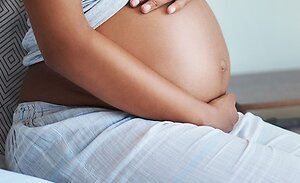Fertility Reflexology
Many different factors affect the ability to conceive. The terms infertility or sub fertility are used when conception has not occurred after 12 months of trying for a baby.
Many women I treat are diagnosed with "unexplained infertility". Some already have a child but are finding it much more difficult to fall pregnant again. Some have medical conditions such as PCOS, blocked fallopian tubes or fibroids and some are finding it difficult to conceive because of their age. Some clients are undergoing IVF or other fertility treatment and have reflexology treatment to support this.
There may be many benefits to having reflexology to aid with fertility including:
Stimulating the ovaries and uterus
Reducing stress levels
Balancing hormones
Regulating the menstrual cycle
Improving blood circulation
Enhancing the body's own natural healing abilities
Maternity Reflexology
Reflexology is one of the most popular Complementary Therapies used during pregnancy and is increasing in popularity due to it's positive results. Regular treatments during pregnancy can lead to greatly reduced labour times and may reduce the need for pain relief. It can help to prepare you physically, mentally and emotionally for the birth of your baby.
Reflexology treatment during your pregnancy can help with the following conditions:
Oedema
Backache
Heartburn
Sluggish bowels
Nerve pain
Morning sickness
Symphysis Pubis Dysfunction (Pelvic Girdle Pain)
Sleep problems
Fatigue
Ligament pain
Mood swings
Anxiety
Please note that I do not treat in your first trimester.
Postnatal Reflexology
Maternity Reflexology is also excellent in the postnatal period. It can help regain equilibrium to your body which has been through huge physical and emotional change for nine months. Some symptoms reflexology can help with at this time are:
Balancing hormones/ encourage menstrual cycle to return to normal
Prevent postnatal depression
Encourage lactation
Backache
Low energy
Stress
Insomnia
Copy and paste these links to your web browser to read this interesting article in the Daily Mail about reflexology and fertility:
http://www.dailymail.co.uk/health/article-20980/Is-reflexology-new-cure-infertility.html
https://thesurreyparkclinic.co.uk/is-reflexology-the-new-cure-for-infertility/
Women's Conditions
Stress is the hidden and silent cause of many modern day illnesses. Reflexology is excellent for relieving stress and restoring the natural equilibrium of the mind and body. It allows you to completely switch off and ease away any stored tension both, physical and mental. It balances the hormones and nervous system, aids breathing and relaxation. Blood circulation is improved, allowing oxygen and nutrients to be carried around the body more efficiently, particularly to the brain.
It is generally accepted that 75% of all disease is caused by stress.
If you can eliminate stress from your life, you will be closer to eliminating illness.
Stress is the way that you feel and react when excessive pressure is placed on you. A small amount of pressure can be quite productive, give you motivation, and help you to perform better at something.
However, too much pressure, or prolonged pressure, can lead to stress, which is unhealthy for both the mind and body. Everyone reacts differently to stress, and some people may have a higher threshold than others. Too much stress often leads to physical, mental, and emotional problems.
The following are just some of the symptoms of stress:
- Anger
- Depression
- Anxiety
- Food cravings
- Lack of appetite
- Frequent crying
- Difficulty sleeping
- Feeling tired
- Difficulty concentrating
- Chest pains
- Constipation or diarrhoea
- Cramps or muscle spasms
- Dizziness
- Fainting spells
- Nail biting
- Nervous twitches
- Pins and needles
- Feeling restless
- A tendency to sweat
- Breathlessness
Fibroids are benign (non cancerous) tumours that grow in the uterus. They can be as small as a pea or can grow as large as a melon. It is estimated that 20-50% of women have, or will have, fibroids at some time in their lives. They are rare in women under the age of 20, most common in women in their 30s and 40s, and tend to shrink after the menopause. They can cause varying degrees of pain and excessive bleeding usually during menstrual periods.
Endometriosis is said to be present when cells that normally line the womb are found elsewhere in the body, such as the outside of the fallopian tubes, the ovaries and the bladder. These cells behave in the same way as those lining the womb so, in response to the female hormones, they grow during the menstrual cycle and bleed during a period.This condition can also cause excessive bleeding and pain during a menstrual period.
Infertility in women can be caused by the above conditions as well as several other conditions such as polycystic ovaries, blocked or damaged fallopian tubes and hormonal imbalances. One of the main and quite often hidden causes of infertility is stress. In a percentage of cases, the cause of infertility is unknown.
PMS or premenstrual syndrome affects around 90% of menstruating women. For most women the symptoms are mild, but a small proportion finds their symptoms so severe they dread this time of the month. The most common symptoms are mood swings, irritability, crying for no particular reason,tiredness,abdominal swelling or bloating, weight gain and migraines.
The menopause, also called the change of life, is defined as the end of the last menstrual period. In Western women it occurs on average at 51 years, but there is a wide range of normal extending from your 30s to 60s. The menopause occurs when the ovaries no longer respond to the controlling hormones released by the pituitary gland of the brain. As a result, the ovaries fail to release an egg each month and to produce the female sex hormones oestrogen and progesterone. Some women manage to get through the menopause without help but a large number of women do need help to get through this phase in their lives.
Some of the symptoms of the menopause are irregular periods, hot flushes, depression and headaches. Some women may develop osteoporosis due to falling oestrogen levels.

